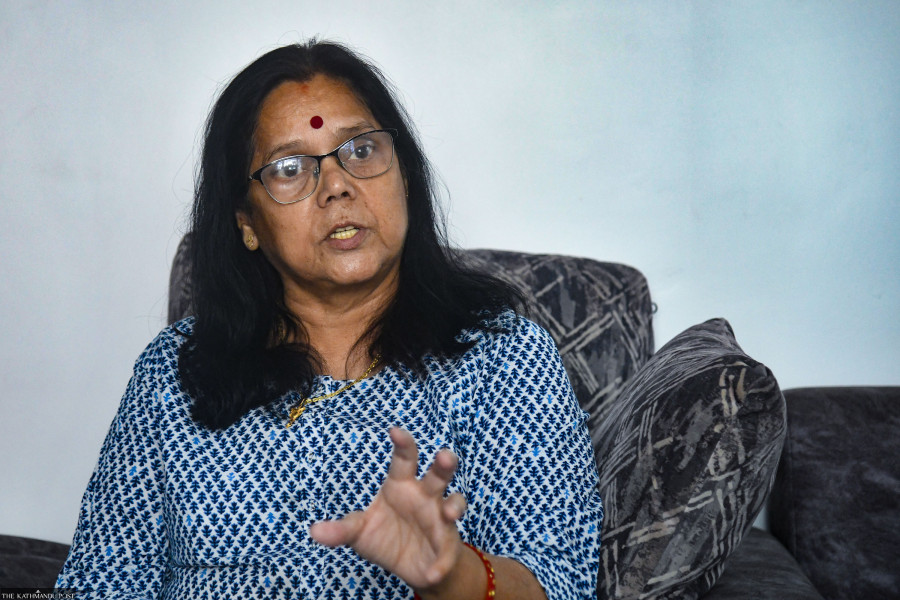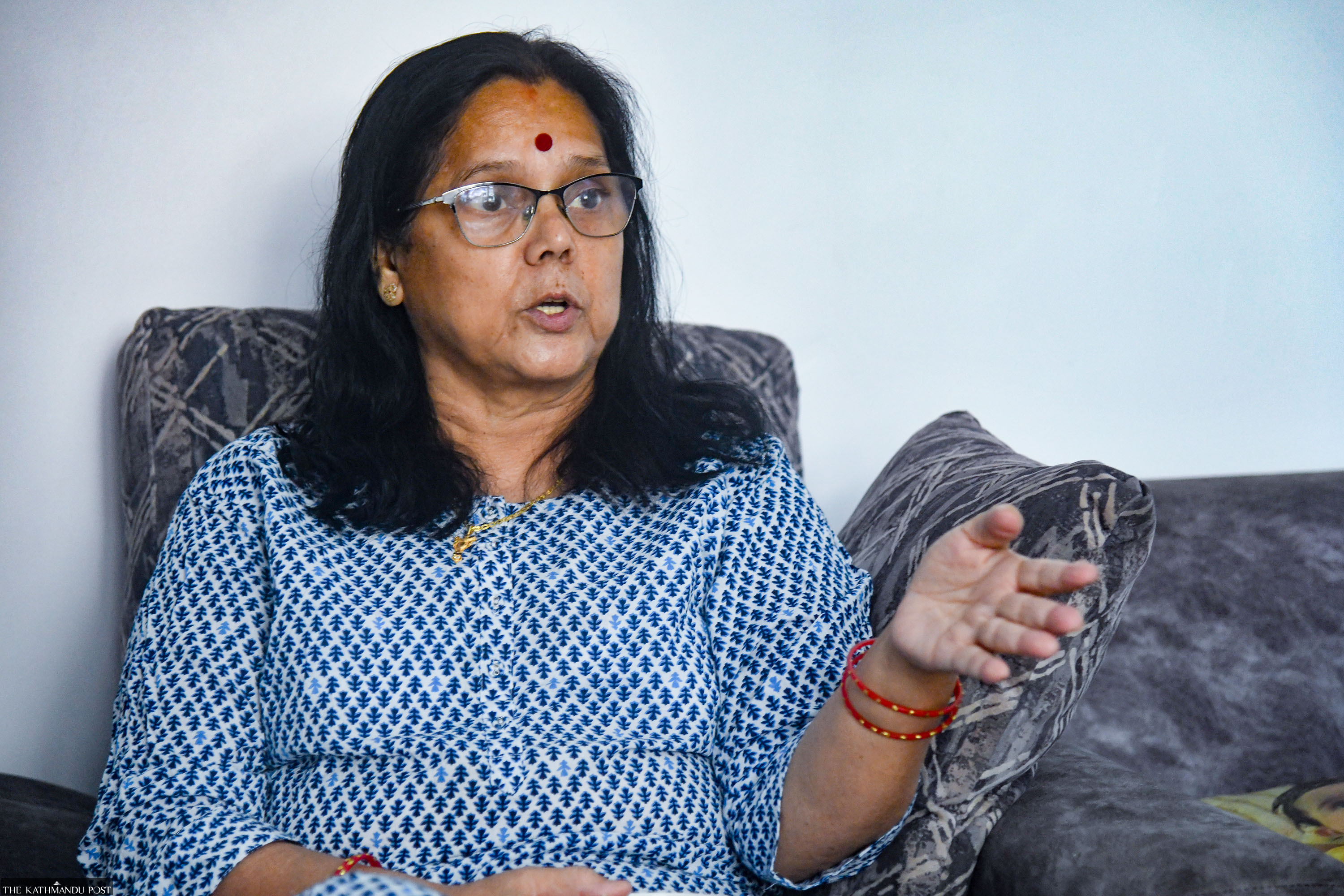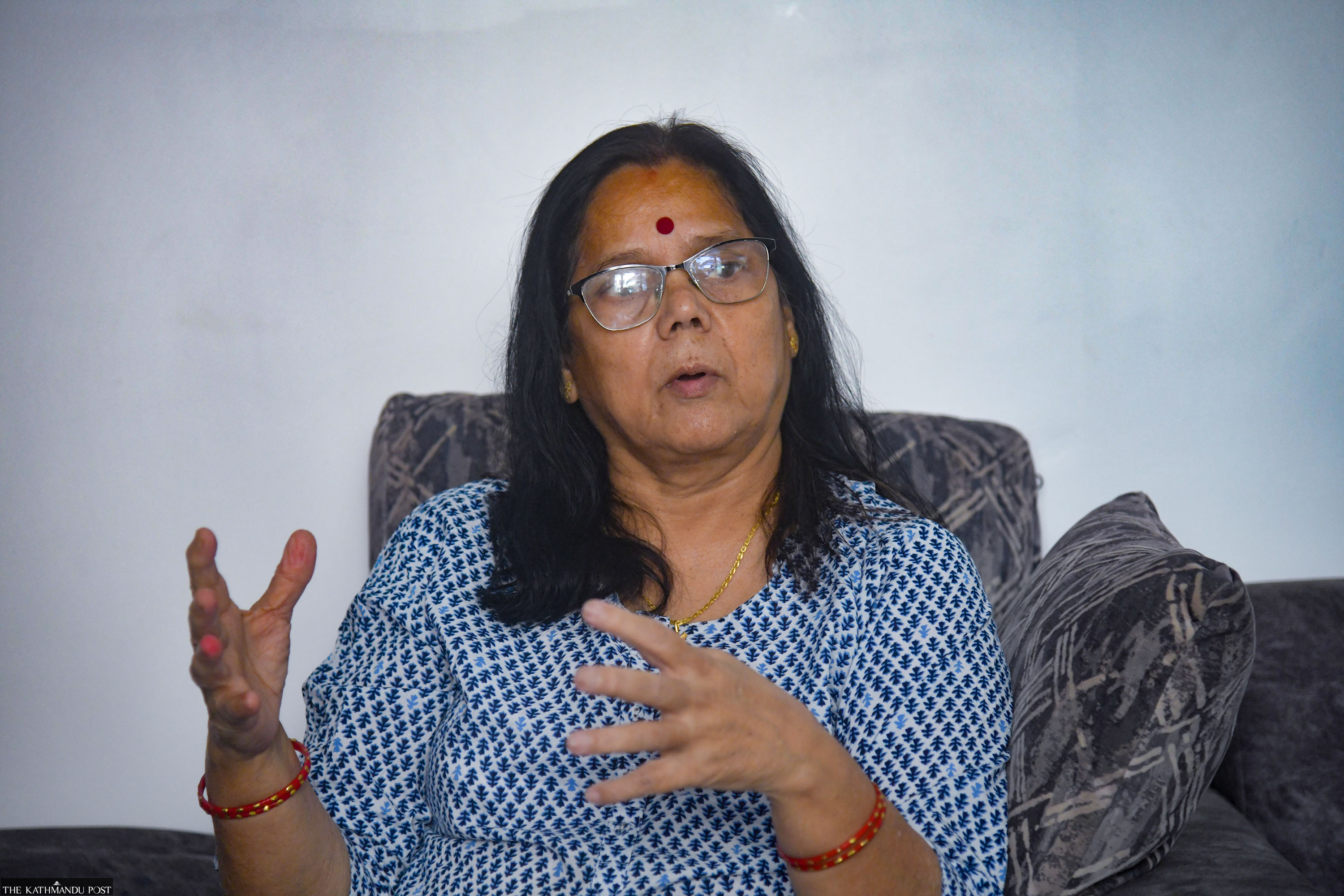Interviews
Teachers’ capacity must be enhanced to implement letter grading system
Grading system was enforced without laying the proper ground for it, including through better teacher training.
Thira Lal Bhusal
In the Secondary Education Examinations (SEE) conducted this year, over 52 percent of students failed to graduate to grade 11. The National Examination Board had enforced the ‘non-graded’ category from this year. The underperformance of the majority of school students has stirred a fresh debate about the test system. The Post’s Thira Lal Bhusal sat down with former National Planning Commission member Usha Jha, who led the committee that recommended the government to adopt the letter grading system.
How do you analyse the SEE results published on Thursday?
People have reacted to it with shock, not me. In fact, on the basis of the teaching system that is being practised in our schools, I think the results are good. We get the results based on what and how we teach students. Over 52 percent of students have been categorised as non-graded. We need to identify and address the causes behind the bad results. I have heard some people blame the letter grading system. This is wrong. A form of letter grading system was already there. We only suggested an upgraded form of the system. If we start blaming the system, we won’t find the real cause of the problem.
What may be the real causes that you are hinting at?
The first is the poor quality of teachers in our country. A form of letter grading system was there even before. But it had two loopholes. First, the government took an approach whereby all students would pass. That gave an impression to the students that they don’t need to study hard. That degraded the quality of their education. Second, there was a system of giving marks based on the students’ performances in theoretical and practical exams. Of the total 100 marks, the practical exams made up 35 marks. Most students were given maximum marks in the practical exams. That helped them get higher grades even if they didn’t do well in theoretical exams. This system encouraged students to neglect theoretical studies. That has caused huge damage to our education system. The letter grade system introduced this year has closed those loopholes.
But the letter grading system requires a learning environment. The system was introduced without adequate preparation for its effective implementation. Also, the Covid pandemic disturbed preparatory works at the time. We should have drastically improved classroom teaching practices, and trained teachers across the country because their teaching methods are outdated. They weren’t trained on the grading system. They give lectures and encourage students to memorise while the letter grading system requires a thorough process and encourages result-oriented learning. It doesn’t prioritise marks. Our teachers and schools lacked the capacity to implement the new system. Teachers weren’t trained and prepared. Even now, most teachers don’t know what the letter grading system is.
The system is necessary to make our students compete in global markets.While we upgraded the system, we didn’t upgrade the schools and teachers. Our teachers engage only in routine and formal responsibilities such as completing textbook courses before the examinations. This system should be properly internalised not only by teachers and students but also school management, palikas [local units] and parents of the students. Only then can it be effectively implemented. These are the major reasons behind the poor results.

How is the students’ performance evaluated in the letter grading system?
First, teachers should study a lot. They take reference of the subject matter from the textbook and teach students giving a broader perspective of the matter. They have to engage the students practically on the issue. The students should be regularly evaluated based on their participation and response in study and activities. The teachers should teach them and constantly monitor whether they are learning and making progress. The marking should be based on that. So, in this system, the examination starts from day 1 and everyday activities contribute to their marks. It also takes other activities such as behaviour, understanding, presentation into consideration. Therefore, it is called a regular assessment system based on a thorough process, unlike the traditional three-hour-long yearly examination method. If the teachers aren’t competent to carry out these activities, this idea can’t yield good results. They badly need capacity enhancement. The pedagogy should be remodelled.
What was the rationale behind the decision to implement this system?
One reason was to upgrade our education’s standard on par with the international standards and make our students fit for global markets. In the course of formulating this policy, we undertook a comprehensive research of international practices. Based on that evidence-based research, we submitted a report to then education minister Giriraj Mani Pokharel. The government studied and endorsed it. Basically, this system was introduced with an objective of upgrading our education system in the changed context. But we lacked preparations to implement this idea.
We will make a mistake if we change this system. I heard that the education minister [Sumana Shrestha] decided to make some changes in the policy and allow all non-graded students to sit for chance examinations, whereas the system says only those students who secured non-grades in two subjects can retake exams for the same subjects. There is no point in changing the method to favour even the students who have failed in all the subjects. She should have made it clear what factors made her change the criteria overnight. I cannot understand why the minister made the decision in a haste without considering its impact.
In fact, our next step should have been capacity enhancement of teachers. The minister took some right decisions such as separating teachers from political parties. But an incumbent minister changing a system that was implemented by a previous minister would cause a problem. She could have formed a panel to conduct a study to find if the letter grading system is the main cause behind the students’ underperformance. But changing a policy through an order didn’t look good.
Results show our students are very poor in mathematics, science and English. What could be the reasons?
This is unfortunate. We saw similar trends in previous years as well. Mathematics and science are becoming more challenging. One reason is the lack of sufficient teachers for these subjects. Also, some teachers are under-utilised. Some teachers don’t go to the schools. So special measures need to be taken to manage teachers mainly for these subjects. Otherwise, we will have similar results in the coming years.
The committee under your leadership recommended that those getting a GPA below 1.6 have to choose technical courses and those willing to study Grade 11 must score above 1.6 GPA. What was the idea behind that recommendation?
The idea was to end the situation of halting students’ study and activities because of their lower grades. We have a government body in the form of the Council for Technical Education and Vocational Training (CTEVT) which has been offering dozens of vocational training based on the needs and interests of people. So our youths can join a suitable CTEVT course. We need more people in vocational fields. Skilled people aren’t available in the country. A large number of people working in technical fields in Nepal are from India. We included the provision in consultation with CTEVT officials. Minister Giriraj Mani Pokharel had also prepared a broad plan to implement the letter grading system and integrate the vocational part in our education system. The present government should improve the education system by enhancing teachers’ capacity and encouraging youths to join vocational training to fill the gaps in the employment market.

Are the infrastructure and resources available in our education system sufficient to implement the grading system?
Some schools lack even essential resources while in some we find misuse or underuse of resources. So, our education ministry should carry out a comprehensive mapping and find where teachers are required, where they are underutilised and where they are idle. Then, the government can make optimum use of the teachers and make additional investment on need-basis. Such an approach will yield better results. In general, our academic institutions lack resources as there is a trend of allocating insufficient budgets for the education sector. Yes, the letter grading system needs more investment. We have to work on teachers’ capacity enhancement and to provide learning materials to students. When you make an activity participatory, you certainly need resources and investments.
Do we need to review our teacher recruitment process and our pedagogy in the universities that produce teachers?
The government can consider new requirements while recruiting teachers and train them accordingly. Also, we need to update our curriculum and pedagogy for courses such as BEd and MEd to produce quality teachers. I have doubts about the quality of our graduates, post-graduates and even PhD holders due to the poor teaching and learning environment of our academic institutions. There is a need for more coordination and collaboration between the government and universities to address such issues.
In the end, I want to stress that the government should adopt a clear and consistent policy and avoid ad-hoc decisions. The letter grading system is the best and we should push for that despite the challenges in its implementation. Just that it should have been enforced after enhancing teachers’ capacity. The problems we have now are due to lack of preparation.




 19.12°C Kathmandu
19.12°C Kathmandu












